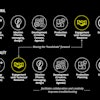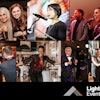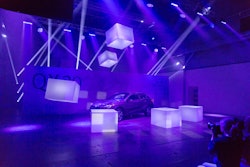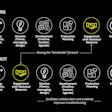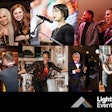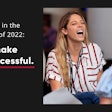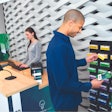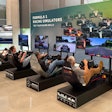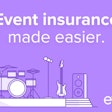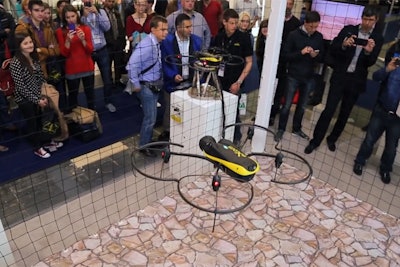
International C.E.S. took over Las Vegas from January 6 to 9, drawing a whopping 170,000 attendees and 3,600 exhibitors over 2.2 million net square feet. Much has been made of the massive consumer electronics show's top tech trends, but event and meeting professionals have been incorporating many of them for years. For its innovative uses of drones, robots, virtual reality, 3-D printing, and wearable technology, these are the ways the industry has been an early adopter of many of the buzzed-about trends at C.E.S. this year.
Drones
Parrot, FlyHawk, and Nixie were all among the many exhibitors showing off drones on the exhibit floor this year. But back in 2013, Orlando-based Sonus Studios was already offering aerial event photography captured by drones. The battery-operated and GPS-equipped aircraft flies 130 feet high, capturing still or moving pictures from outdoor events.
Drones have even been used as high-tech event staffers—delivering cold beverages to 150 guests at the OppiKoppi music festival in South Africa. Part of a partnership with Darkwing Aerials, Windhoek Beer, and festival organizers, guests used a smartphone app to order beers, and staff loaded those orders onto drones, which used guests’ GPS coordinates to make the drop-off by way of parachutes.
And industry pros say the use of drones for event applications is only likely to increase, in particular to capture event imagery in groundbreaking ways. "We have interest by a lot of major brands into integrating local, small-elevation drones into their footprints,” Brightline Interactive C.E.O. told BizBash in December.
Wearable technology
Wearables blanketed C.E.S. this year as expected, with new forms from watches to belts to fitness trackers exhibited. Event professionals have long incorporated the gadgets, using such tools as wristbands and badges that allow attendees to share to social media channels and save event content right on the spot, and in turn track guest behavior in real time.
On a more advanced level, event professionals were among the early adopters of wearable computer Google Glass for applications like hands-free slideshow control, note taking, site inspecting, photo sharing, and assembling meetings. In fact, an array of apps for the device have specific purposes for meetings and events.
Robots
Robots had a significant presence at C.E.S. this year, with Intel using them to greet guests at its exhibit and Toshiba showing off a robot meant for utility in the home.
Events have used robots as high-tech bartenders, such as the Makr Shakr designed by the M.I.T. Senseable City Lab in collaboration with the Coca-Cola Company and Bacardi Rums and produced by Italian firm Carlo Ratti Associati. The robot allows guests to send their cocktail orders via an app before mixing them to their specs. It also has social sharing capabilities and monitors consumption for safety.
Ford Motor Company has used its robot, dubbed Hank, to entertain trade show attendees for several years. The robot, controlled by a sensor-equipped hidden staffer, greets and entertains guests.
More practically, robots have allowed meeting and event participants to play a role in those events without being there in person. For instance, in 2013 Anybots QB robot was already offering a mobile platform equipped with a screen, camera, and speaker to bring users virtually into a space, as were other concepts like it.
3-D printing
New advances in 3-D printing garnered much attention at this year's C.E.S. But with almost limitless event world applications, 3-D printing has been used in face-to-face programming for several years. Last year in Canada, the Art Gallery of Ontario used the technology in a bar installation with Absolut.
Even earlier, the Japanese creative agency Party used the technology in 2013 as a photo booth attraction at its Omote 3D pop-up, where the tool printed mini figurines of its subjects, who stood still for a scan. And MakerBot actually debuted a 3-D photo booth inside its New York store in 2012.
Virtual reality
Virtual reality offerings kicked up at C.E.S. this year, where there was even a dedicated augmented reality pavilion within the show.
In the live event realm, the Oculus Rift virtual reality headset has been used to provide everything from a glimpse into the life of a Fashion Week model for sponsor Canon to a view from the top of the London Eye at IMEX America.

